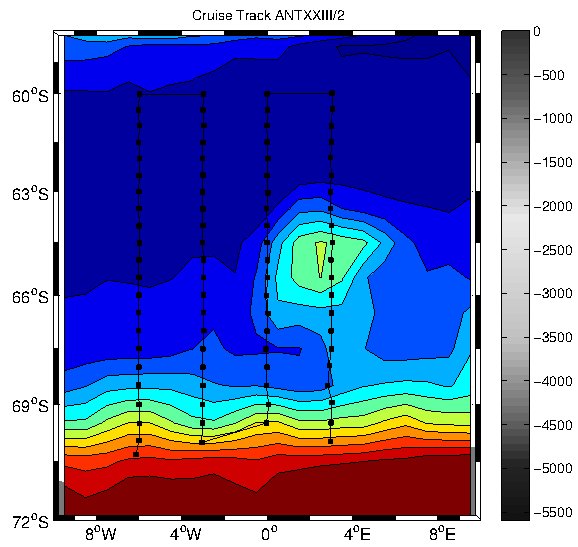
Deep Water originating in the North Atlantic is transported across the Antarctic Circumpolar Current by eddies and, after circumnavigating of the Antarctic, enters the Weddell Gyre south of Africa. As it does so it rises up from mid depth towards the surface. The separate temperature and salinity maxima, the Upper and Lower Circumpolar Deep Waters, converge to form the Warm Deep Water. Cores of this water mass on the southern flank of the eastern Weddell Gyre show a change in characteristic as they flow westward in the Lazarev Sea. Observations have been made along four meridional sections at 3oE, 0o, 3oW and 6oW between 60 and 70oS during the Polarstern Cruise ANTXXIII/2 in 2005/2006. These show that a heterogeneous series of warm and salty cores entering the region from the east both north and south of Maud Rise (65oS, 3oW) gradually merge and become more homogeneous towards the west. The gradual reduction in the variance of potential temperature on isopycnals is indicative of isopycnic mixing processes. A multiple regression technique allows diagnosis of the eddy diffusivities and thus the relative importance of isopycnic and diapycnic mixing. The method shows that the isopycnic diffusivity lies in the range 70-140 m2 s-1 and the diapycnic diffusivity reaches about 3 * 10-6 m2 s-1. Scale analysis suggests that isopycnic diffusion dominates over diapycnic diffusion in the erosion of Warm Deep Water cores. (Leach et al. 2011)
Leach, H., V. H. Strass and B. Cisewski, 2011, Modification by Lateral Mixing of the Warm Deep Water entering the Weddell Sea in the Maud Rise Region. Ocean Dynamics, 61, (1), 51-68. DOI: 10.1007/s10236-010-0342-y
Link to Harry Leach's Homepage.
H.Leach, 27.09.12